Hip replacement surgery can be performed traditionally or by using what is considered a minimally-invasive technique. The main difference between the two procedures is the size of the incision. During standard hip replacement surgery, you are given general anesthesia to relax your muscles and put you into temporary deep sleep. This will prevent you from feeling any pain during the surgery or have any awareness of the procedure. A Spinal Anesthetic may be given to help prevent pain as an alternative. The doctor will then make a cut along the side of the hip and move the muscles connected to the top of the thighbone to expose the hip joint. Next, the ball portion of the joint is removed by cutting the thighbone with a saw. Then an artificial joint is attached to the thighbone using either cement or a special material.
After surgery a patient can :
Play Golf, Climb Stairs, Drive a Car, Sit Crossed Legs
Enquiry Form
Get FREE second consultation from doctor. *T&C Apply'Ceramic' is the 21st century answer to hip replacement being both hard and durable. Hardness of the Ceramic gives is high abrasion and scratch resistance. Surface tension gives it excellent lubrication properties. it wears minimally and is deemed to have no toxic or side effects in human body, and thus it is often called "Biologically inert." Also, there is no inflammation or bone loss reported and if one is talking about longevity and reliability, one can trust 'Ceramic' on that!
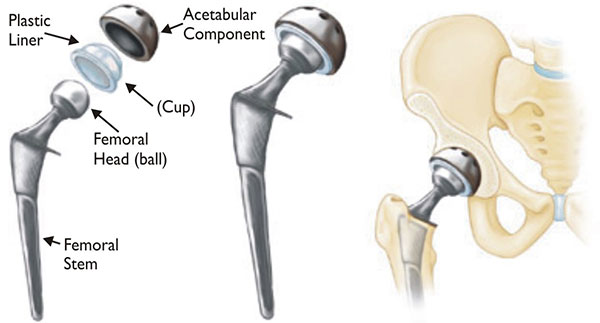
Indications for Hip replacement are :
Ceramic hip replacement surgery requires an experienced surgeon, as placement variance by one or two degrees can significantly affect the results of the implant. Ceramic bearings are available in three configurations, all of which feature a Ceramic femoral head.
The differences are in the material used for the cup's liner & Ball, which can be made of :
1. Ceramic ball on Ceramic Cup
Ceramic-on -Ceramic bearings in hip replacement have low rates of wear, (1000 times less than plastic) and if implanted correctly may last 40 years or more.
► Include a Ceramic ball and a socket with Ceramic lining.
► Lowest wear rate because all material is Ceramic.
► Fewer particles are released during movement.
► Particles are not as biologically active as those of other types of implants.
Over 90% of patients have excellent pain relief after the surgery. The average hip replacement lasts about 25 yrs some longer, some shorter. However, hip replacements are known to wear out more quickly inyounger, more active patients. For younger patients, thus, a ceramic on polyethylene prosthesis may be the implant for hip replacement. But unfortunately it often breaks and is known to causes squeaking noise also.
2. Ceramic ball on Vitamin-E Poly Cup :
Ceramic on vitamin-E poly is undoubtedly a long term performance for high demand patients. Ceramic in Vitamin-E poly delivers on 3 critical performance characteristics of polythene.
► Exceptional oxidation stability.
► Ultra low wear.
► Improved strength.
Since the vitamin E in the polyethylene, actively and continuously prevents oxidation, the presence of Vitamin-E eliminates the needs for post-irradiation remelting, resulting in improved strength. As a result, surgeons are now showing a preference for highly cross linked polyethylene (HXPE) liners, often in combination with a Ceramic ball head, for their younger patients. Thus, Ceramic on Vitamin-E poly, no doubt , is the ultimate implant for hip replacement in the young.
Ceramic on Ceramic is undoubtedly, the best implant for TKR but there have been reports of breakage of the ball/cup as both are hard/surfaces brittle. So these days, Ceramic in Vitamin E poly liner is the best option. We, at Orthonova have done around 300 Ceramic on Ceramic/Ceramic on Vitamin E poly.
3. Ceramic ball on polyethylene Cup :
► Used in younger patients
► Preferred choice because of its durability
► Ball made of Ceramic material and a polyethylene socket
► Reduction in joint wear
► Better lubricated than metal ball on poly liner
4. Metal on polyethylene THR :
► Metal ball on plastic cup
► Used in old patients
► Has high wear late & fails early
5. Metal on Metal THR :
► Cup & ball of steel
► used earlier but withdrawn due to side effects.
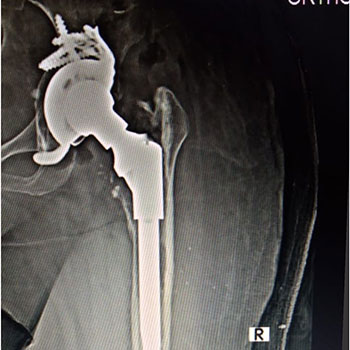
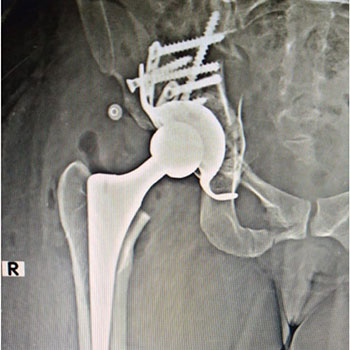
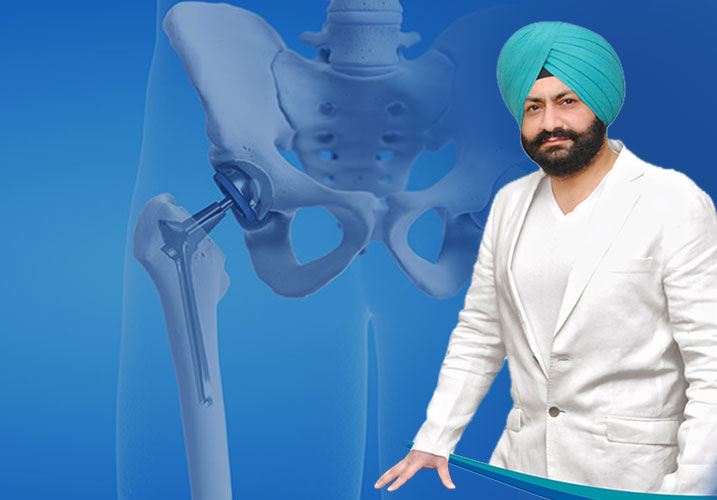
Depends on type of fixation to the bone.
1. Cemented Total Hip Replacement :
► Where stem & plastic cup are both fixed with cement to the bone.
► Done in old age.
2. Hybrid THR :
Where either the stem on the cup fixation is without cement the one side ic cemented & other is uncemented.
3. Uncemented THR :
► Where both components are uncemented.
► Generally considered best for young patients.
YEAR 2006 : First ceramic hip joint replacement in whole of India

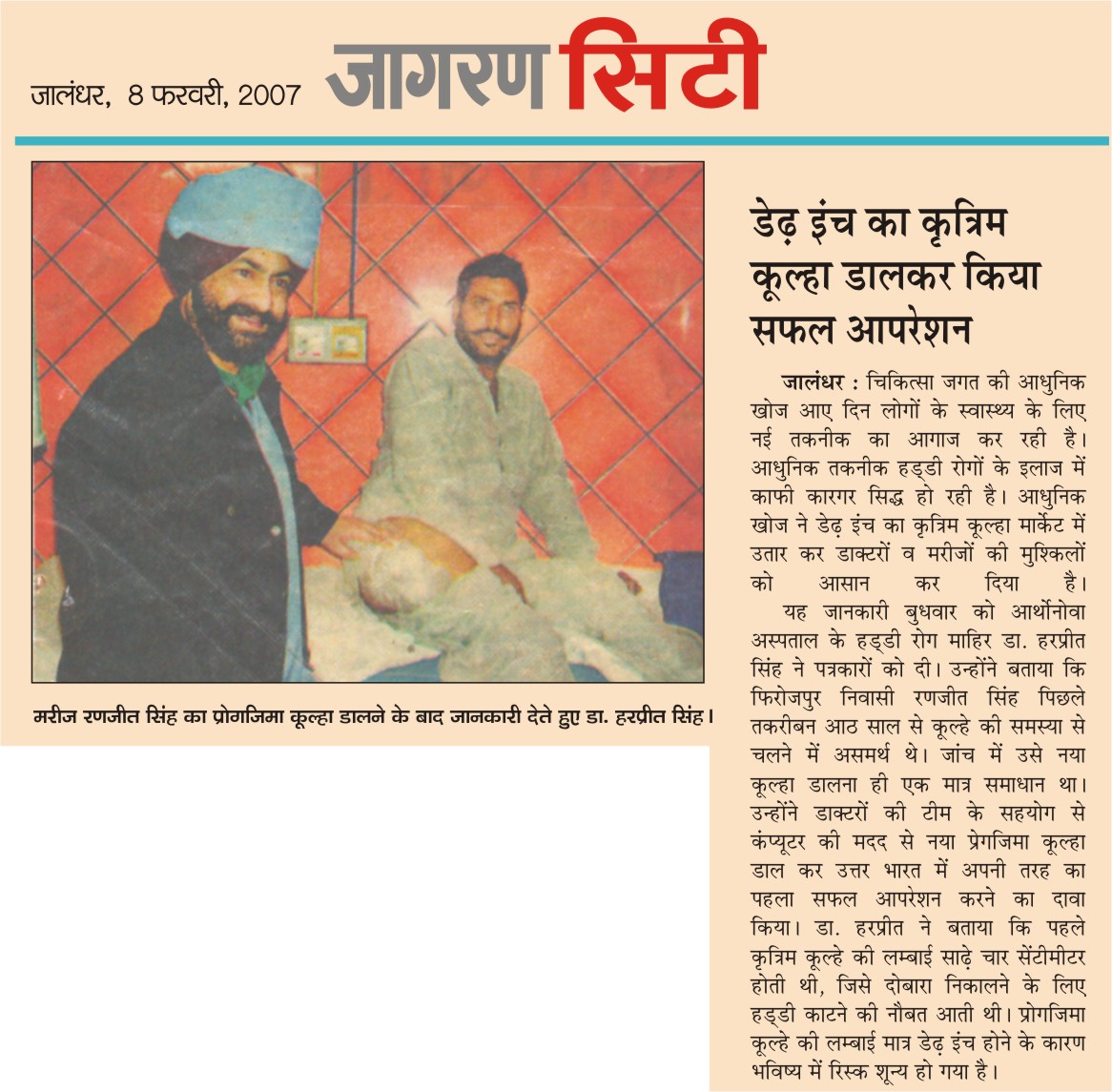

Watch video of both side Ceramic Hip Replacement in 27yrs old male walking without crutches on the 7th day of surgery.

